
Home - Search - Browse - Alphabetic Index: 0- 1- 2- 3- 4- 5- 6- 7- 8- 9
A- B- C- D- E- F- G- H- I- J- K- L- M- N- O- P- Q- R- S- T- U- V- W- X- Y- Z
Foton
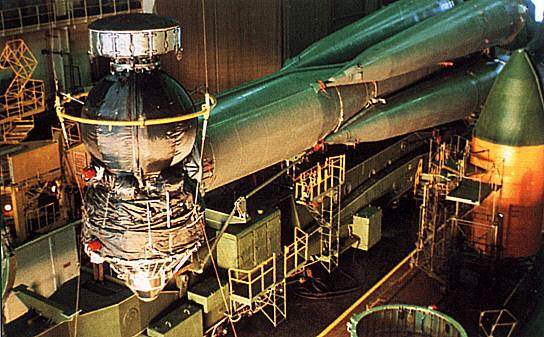
Foton
Foton satellite in its assembly hall, with its booster and payload shroud. The cylindrical module at the top is a Nauka module.
Status: Operational 1985. First Launch: 1985-04-16. Last Launch: 2007-09-14. Number: 15 . Payload: 404 kg (890 lb). Gross mass: 6,190 kg (13,640 lb).
Beginning in 1985 the USSR/CIS conducted annual unmanned space missions dedicated to materials science research. The Foton spacecraft used for these flights was a derivative of the 1960's era Vostok/Voskhod manned spacecraft and the Zenit military reconnaissance satellites and was very similar to the Bion and Resurs-F satellites. Prototype Foton satellites were launched as Cosmos 1645, 1744, and 1841. Since 1988 the spacecraft were officially designated as Foton.
The 6200 kg spacecraft was 6.2 m in length with a maximum diameter of 2.5 m and was divided into three major sections: the service/retro module, the payload capsule, and an equipment block. The 2.3-m diameter recoverable capsule could handle a payload of up to 700 kg and a volume of 4.7 m3. Electrical power was supplied entirely by storage batteries with 400 W average per day allocated to the payload (up to 700 W for 90 minutes each day). Mission durations for the eight Foton flights to the end of 1992 were 13-16 days.
To minimize perturbation forces, thereby maximizing microgravity conditions (as low as 10^-5 g), Foton spacecraft were placed in mildly eccentric orbits at 62.8 degrees inclination and were not maneuvered during the mission.
Prior to 1991 annual Foton missions were always launched in April or May. Launches were performed by the Soyuz booster from Plesetsk, and recoveries were made in Kazakhstan in the primary manned recovery region north-east of the Baikonur Cosmodrome.
Foton spacecraft had flown with the Zona 1, Zona 4, Zona 4M, Splav 2, and Konstanta 2 electric furnaces as well as the Kashtan electrophoresis unit. The French firm Carra was developing a new interface module for Foton called Spacepack in 1994, which would facilitate the integration of foreign microgravity experiments on Russian spacecraft like Foton.
More at: Foton.
Family: Materials, Materials science satellite. Country: Russia. Engines: 11D82M. Launch Vehicles: R-7, Soyuz-U, Soyuz-U2, Soyuz-U-PVB. Launch Sites: Baikonur, Baikonur LC1, Plesetsk, Plesetsk LC41/1, Plesetsk LC43/4, Plesetsk LC43/3. Agency: MOM, Kozlov bureau. Bibliography: 2, 276, 374, 4, 552, 554, 6, 69, 6505, 12389, 12390, 12391.
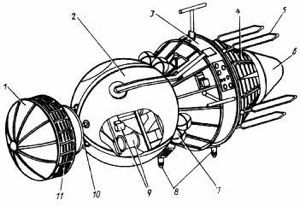 | Foton |
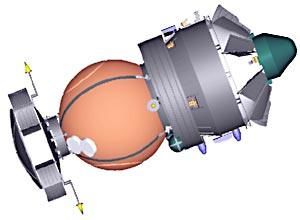 | Foton-M Credit: TsSKB |
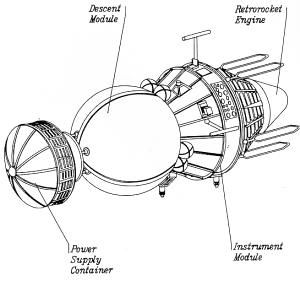 | Foton Credit: TsSKB |
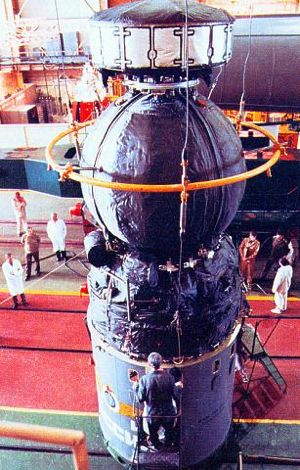 | Foton Credit: TsSKB |
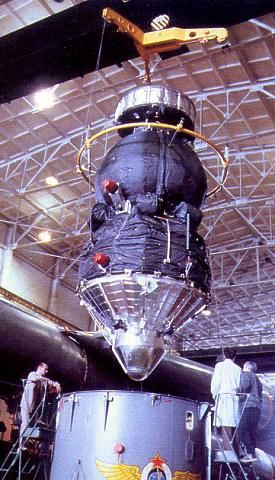 | Foton Credit: TsSKB |
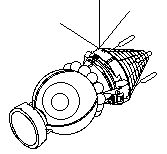 | Foton 10 Credit: Manufacturer Image |
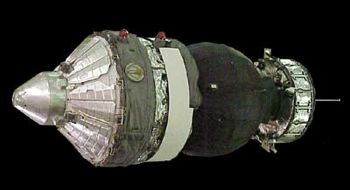 | Foton-M Credit: Manufacturer Image |
 | Foton Credit: © Mark Wade |
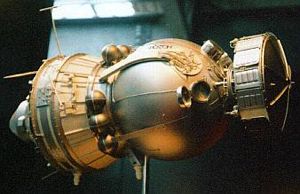 | Foton Credit: © Thomas Ludwig |
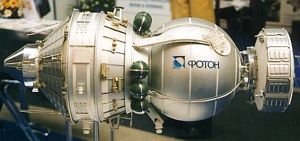 | Foton Credit: © Carsten Wiedemann |
1985 April 16 - . 17:15 GMT - . Launch Site: Plesetsk. Launch Complex: Plesetsk LC41/1. LV Family: R-7. Launch Vehicle: Soyuz-U.
- Cosmos 1645 / Foton 1 - . Payload: Foton s/n 1L. Mass: 6,200 kg (13,600 lb). Nation: Russia. Agency: MOM. Class: Materials. Type: Materials science satellite. Spacecraft Bus: Vostok. Spacecraft: Foton. Duration: 12.16 days. Decay Date: 1985-04-29 . USAF Sat Cat: 15645 . COSPAR: 1985-029A. Apogee: 388 km (241 mi). Perigee: 214 km (132 mi). Inclination: 62.80 deg. Period: 90.50 min. Materials processing tests..
1986 May 21 - . 16:30 GMT - . Launch Site: Plesetsk. Launch Complex: Plesetsk LC41/1. LV Family: R-7. Launch Vehicle: Soyuz-U-PVB.
- Cosmos 1744 / Foton 2 - . Payload: Foton s/n 2L. Mass: 6,200 kg (13,600 lb). Nation: Russia. Agency: MOM. Class: Materials. Type: Materials science satellite. Spacecraft Bus: Vostok. Spacecraft: Foton. Duration: 13.19 days. Decay Date: 1986-06-04 . USAF Sat Cat: 16724 . COSPAR: 1986-036A. Apogee: 371 km (230 mi). Perigee: 217 km (134 mi). Inclination: 62.80 deg. Period: 90.40 min. 216 orbits. Materials processing experiments. Continuation of research on materials science in space..
1987 April 24 - . 16:59 GMT - . Launch Site: Plesetsk. Launch Complex: Plesetsk LC41/1. LV Family: R-7. Launch Vehicle: Soyuz-U-PVB.
- Cosmos 1841 / Foton 3 - . Payload: Foton s/n 3L. Mass: 6,300 kg (13,800 lb). Nation: Russia. Agency: MOM. Class: Materials. Type: Materials science satellite. Spacecraft Bus: Vostok. Spacecraft: Foton. Duration: 13.17 days. Decay Date: 1987-05-08 . USAF Sat Cat: 17907 . COSPAR: 1987-037A. Apogee: 380 km (230 mi). Perigee: 217 km (134 mi). Inclination: 62.90 deg. Period: 90.50 min. Materials processing tests. Conduct of experiments on the production of semi-conducting materials and super-pure biological preparations in micro-gravity. .
1988 April 14 - . 17:00 GMT - . Launch Site: Plesetsk. Launch Complex: Plesetsk LC41/1. LV Family: R-7. Launch Vehicle: Soyuz-U-PVB.
- Foton 4 - . Payload: Foton s/n 4L. Mass: 6,200 kg (13,600 lb). Nation: Russia. Agency: MOM. Class: Materials. Type: Materials science satellite. Spacecraft Bus: Vostok. Spacecraft: Foton. Duration: 13.62 days. Decay Date: 1988-04-28 . USAF Sat Cat: 19043 . COSPAR: 1988-031A. Apogee: 372 km (231 mi). Perigee: 215 km (133 mi). Inclination: 62.80 deg. Period: 90.40 min. 218 orbits. Materials processing experiments; extremely pure and semiconductor materials. Research in material science in space (production of semiconductor materials with improved properties and very pure biologically active substances).
1989 April 26 - . 17:00 GMT - . Launch Site: Plesetsk. Launch Complex: Plesetsk LC41/1. LV Family: R-7. Launch Vehicle: Soyuz-U-PVB.
- Foton 5 - . Payload: Foton s/n 5L. Mass: 6,200 kg (13,600 lb). Nation: Russia. Agency: MOM. Class: Materials. Type: Materials science satellite. Spacecraft Bus: Vostok. Spacecraft: Foton. Duration: 14.35 days. Decay Date: 1989-05-11 . USAF Sat Cat: 19941 . COSPAR: 1989-032A. Apogee: 377 km (234 mi). Perigee: 220 km (130 mi). Inclination: 62.80 deg. Period: 90.50 min. 234 orbits. Materials processing. Space materials research (production of enhanced performance semiconductors and especially pure biologically active substances in microgravity conditions). Jointly with France..
1990 April 11 - . 17:00 GMT - . Launch Site: Plesetsk. Launch Complex: Plesetsk LC43/3. LV Family: R-7. Launch Vehicle: Soyuz-U-PVB.
- Foton 6 - .
Payload: Foton s/n 6L. Mass: 6,200 kg (13,600 lb). Nation: Russia.
Agency: MOM.
Class: Materials.
Type: Materials science satellite. Spacecraft Bus: Vostok.
Spacecraft: Foton.
Duration: 15.17 days. Decay Date: 1990-04-27 . USAF Sat Cat: 20566 . COSPAR: 1990-032A. Apogee: 374 km (232 mi). Perigee: 216 km (134 mi). Inclination: 62.80 deg. Period: 90.40 min.
250 orbits. In addition to Russian materials science experiments, Foton 6 carried out the French Gezon experiment using the Russian Zona-4M electric furnace (Foton spacecraft have also flown the Zona 1, Zona 4, Splav 2, and Konstanta 2 electric furnaces as well as the Kashtan electrophoresis unit). Foton 6, which also carried the European Biopan life sciences experiments, was successfully recovered on the 15th day.
1991 October 4 - . 18:10 GMT - . Launch Site: Plesetsk. Launch Complex: Plesetsk LC43/4. LV Family: R-7. Launch Vehicle: Soyuz-U-PVB.
- Foton 7 - . Payload: Foton s/n 7L. Mass: 6,200 kg (13,600 lb). Nation: Russia. Agency: MOM. Class: Materials. Type: Materials science satellite. Spacecraft Bus: Vostok. Spacecraft: Foton. Duration: 15.54 days. Decay Date: 1991-10-20 . USAF Sat Cat: 21737 . COSPAR: 1991-070A. Apogee: 394 km (244 mi). Perigee: 214 km (132 mi). Inclination: 62.80 deg. Period: 90.60 min. Materials research; carried German, French experiments. Continuation of space materials research conducted jointly with Germany and France. .
1992 October 8 - . 19:00 GMT - . Launch Site: Plesetsk. Launch Complex: Plesetsk LC43/4. LV Family: R-7. Launch Vehicle: Soyuz-U-PVB.
- Foton 8 - . Payload: Foton s/n 8L. Mass: 6,200 kg (13,600 lb). Nation: Russia. Agency: MOM. Class: Materials. Type: Materials science satellite. Spacecraft Bus: Vostok. Spacecraft: Foton. Duration: 15.60 days. Decay Date: 1992-10-24 . USAF Sat Cat: 22173 . COSPAR: 1992-065A. Apogee: 359 km (223 mi). Perigee: 218 km (135 mi). Inclination: 62.80 deg. Period: 90.30 min. 250 orbits. Microgravity research. Space materials research (conducted jointly with Germany)..
1994 June 14 - . 16:05 GMT - . Launch Site: Plesetsk. Launch Complex: Plesetsk LC43/3. LV Family: R-7. Launch Vehicle: Soyuz-U-PVB.
- Foton 9 - . Payload: Foton s/n 9. Mass: 6,200 kg (13,600 lb). Nation: Russia. Agency: MOM. Class: Materials. Type: Materials science satellite. Spacecraft Bus: Vostok. Spacecraft: Foton. Duration: 17.56 days. Decay Date: 1994-07-02 . USAF Sat Cat: 23122 . COSPAR: 1994-033A. Apogee: 358 km (222 mi). Perigee: 220 km (130 mi). Inclination: 62.80 deg. Period: 90.30 min. Microgravity experiments. Landed July 2..
1995 February 16 - . 17:39 GMT - . Launch Site: Plesetsk. Launch Complex: Plesetsk LC43/4. Launch Pad: LC43/4?. LV Family: R-7. Launch Vehicle: Soyuz-U-PVB.
- Foton 10 - . Payload: Foton s/n 10. Mass: 6,300 kg (13,800 lb). Nation: Russia. Agency: MOM. Class: Materials. Type: Materials science satellite. Spacecraft Bus: Vostok. Spacecraft: Foton. Duration: 14.62 days. Decay Date: 1995-03-03 . USAF Sat Cat: 23497 . COSPAR: 1995-006A. Apogee: 355 km (220 mi). Perigee: 218 km (135 mi). Inclination: 62.80 deg. Period: 90.30 min. 234 orbits. Carried Russian, French, German micro-gravity experiments. Landed in Russia Mar 3.
1997 October 9 - . 17:59 GMT - . Launch Site: Plesetsk. Launch Complex: Plesetsk LC43/3. LV Family: R-7. Launch Vehicle: Soyuz-U-PVB.
- Foton 11 - . Payload: Foton s/n 11. Mass: 6,190 kg (13,640 lb). Nation: Russia. Agency: RAKA. Manufacturer: Kayser-Threde. Class: Materials. Type: Materials science satellite. Spacecraft Bus: Vostok. Spacecraft: Foton. Duration: 13.63 days. Decay Date: 1997-10-23 . USAF Sat Cat: 25006 . COSPAR: 1997-060A. Apogee: 363 km (225 mi). Perigee: 218 km (135 mi). Inclination: 62.80 deg. Period: 90.30 min. Microgravity experiments. Landed in Kazakhstan Oct 23..
1999 September 9 - . 18:00 GMT - . Launch Site: Plesetsk. Launch Complex: Plesetsk LC43/4. LV Family: R-7. Launch Vehicle: Soyuz-U-PVB.
- Foton 12 - . Payload: Foton s/n 12. Mass: 6,190 kg (13,640 lb). Nation: Russia. Agency: RAKA. Manufacturer: Kozlov bureau. Class: Materials. Type: Materials science satellite. Spacecraft Bus: Vostok. Spacecraft: Foton. Duration: 14.64 days. Decay Date: 1999-09-24 . USAF Sat Cat: 25902 . COSPAR: 1999-048A. Apogee: 365 km (226 mi). Perigee: 215 km (133 mi). Inclination: 62.80 deg. Period: 90.30 min. Foton 12 carried European microgravity experiments. The spacecraft's descent module landed on Russian territory at 52.47 deg N 53.83 deg E on September 24, 1999..
2002 October 15 - . 18:20 GMT - . Launch Site: Plesetsk. Launch Complex: Plesetsk LC43/3. LV Family: R-7. Launch Vehicle: Soyuz-U-PVB. FAILURE: Contamination in hydrogen peroxide line of fuel pump system led to explosion of Strap-on D 29 seconds after launch. The rocket crashed near the pad, debris from the explosion killing one soldier.. Failed Stage: 0.
- Foton-M - .
Payload: Foton M-1 / Foton 13. Mass: 6,425 kg (14,164 lb). Nation: Russia.
Agency: ESA,
RAKA.
Manufacturer: Kozlov bureau.
Class: Materials.
Type: Materials science satellite. Spacecraft Bus: Vostok.
Spacecraft: Foton.
Launch delayed from October 9. Foton-M No. 1 (Foton-13) was an improved version of the Foton materials processing satellite. The 6425 kg satellite carried a variety of microgravity experiments including those of the European Space Agency. The satellite was destroyed in the accident.
2005 May 31 - . 12:00 GMT - . Launch Site: Baikonur. Launch Complex: Baikonur LC1. LV Family: R-7. Launch Vehicle: Soyuz-U-PVB.
- Foton M-2 - .
Payload: Foton 14. Mass: 6,535 kg (14,407 lb). Nation: Russia.
Agency: RAKA.
Manufacturer: Kozlov bureau.
Class: Materials.
Type: Materials science satellite. Spacecraft Bus: Vostok.
Spacecraft: Foton.
Decay Date: 2005-06-16 . USAF Sat Cat: 28686 . COSPAR: 2005-020A. Apogee: 304 km (188 mi). Perigee: 262 km (162 mi). Inclination: 63.00 deg. Period: 89.93 min.
Microgravity mission with the experiments being returned to earth after 16 days in a spherical Vostok capsule of the type that first carried Yuri Gagarin into space in 1961. The capsule landed in Kazakhstan at 07:36 GMT on 16 June. For this mission a 385 kg European payload of 39 experiments in fluid physics, biology, material science, meteoritics, radiation dosimetry and exobiology was carried. A further 215 kg of Russian instruments were also flown. Many were experiments were being reflown following loss of Foton-M1 on 15 October 2002. The planned Fotino miniature re-entry capsule experiment was not flown.
Applied research included heat transfer experiments with the European FluidPac facility, chemical diffusion experiments in the SCCO (Soret Coefficients in Crude Oil), and material science investigations in the Agat and Polizon furnaces. These experiments were expected to contribute to new heat-exchanger designs, more efficient oil exploration processes, and better semiconductor alloys. The Biopan facility carried life science experiments, including a student seed germination test.
2007 September 14 - . 11:00 GMT - . Launch Site: Baikonur. Launch Complex: Baikonur LC1. LV Family: R-7. Launch Vehicle: Soyuz-U-PVB.
- Foton M-3 - .
Mass: 6,500 kg (14,300 lb). Nation: Russia.
Agency: RAKA.
Manufacturer: Kozlov bureau.
Class: Materials.
Type: Materials science satellite. Spacecraft Bus: Vostok.
Spacecraft: Foton.
Decay Date: 2007-09-26 . USAF Sat Cat: 32058 . COSPAR: 2007-040A. Apogee: 280 km (170 mi). Perigee: 258 km (160 mi). Inclination: 62.90 deg. Period: 89.90 min.
Recoverable spacecraft derived from the Vostok. Carried Russian and European microgravy, life sciences and technology experiments. After deploying the YES-2 tether on 25 September, Foton M-3 was deorbited at 07:23 GMT on 26 September and successfully landed at 07:58 GMT in Kazakhstan.
Back to top of page
Home - Search - Browse - Alphabetic Index: 0- 1- 2- 3- 4- 5- 6- 7- 8- 9
A- B- C- D- E- F- G- H- I- J- K- L- M- N- O- P- Q- R- S- T- U- V- W- X- Y- Z
© 1997-2019 Mark Wade - Contact
© / Conditions for Use